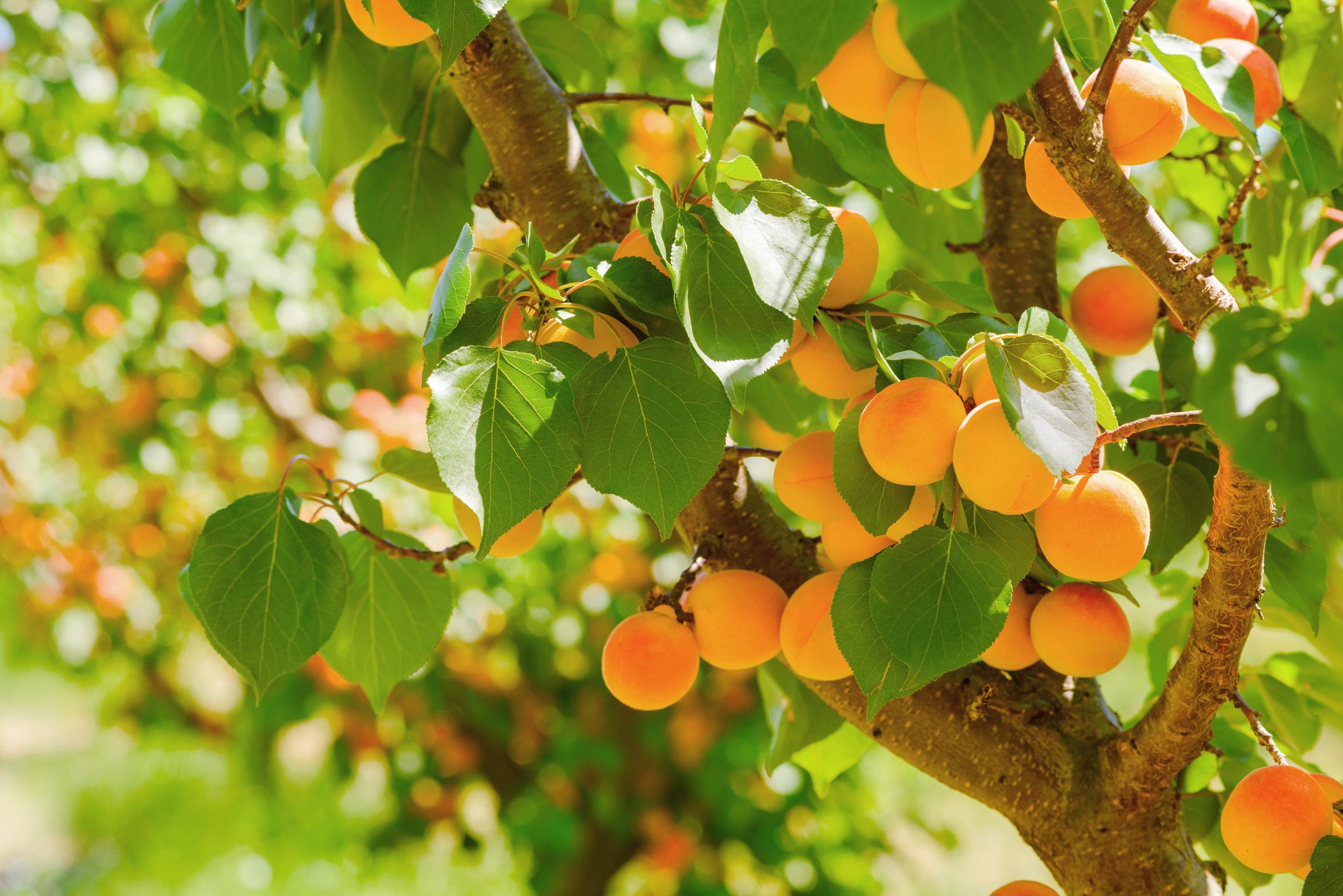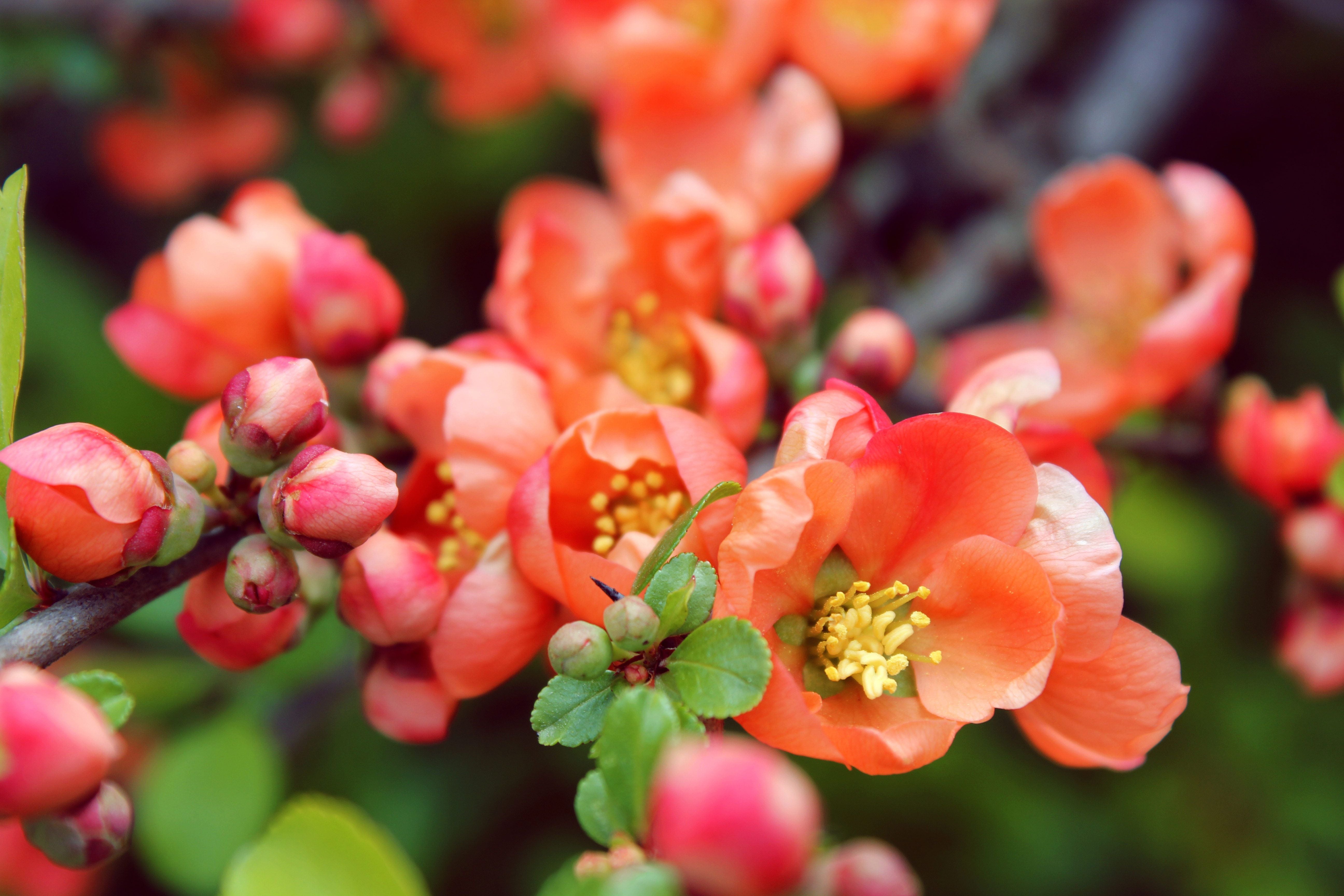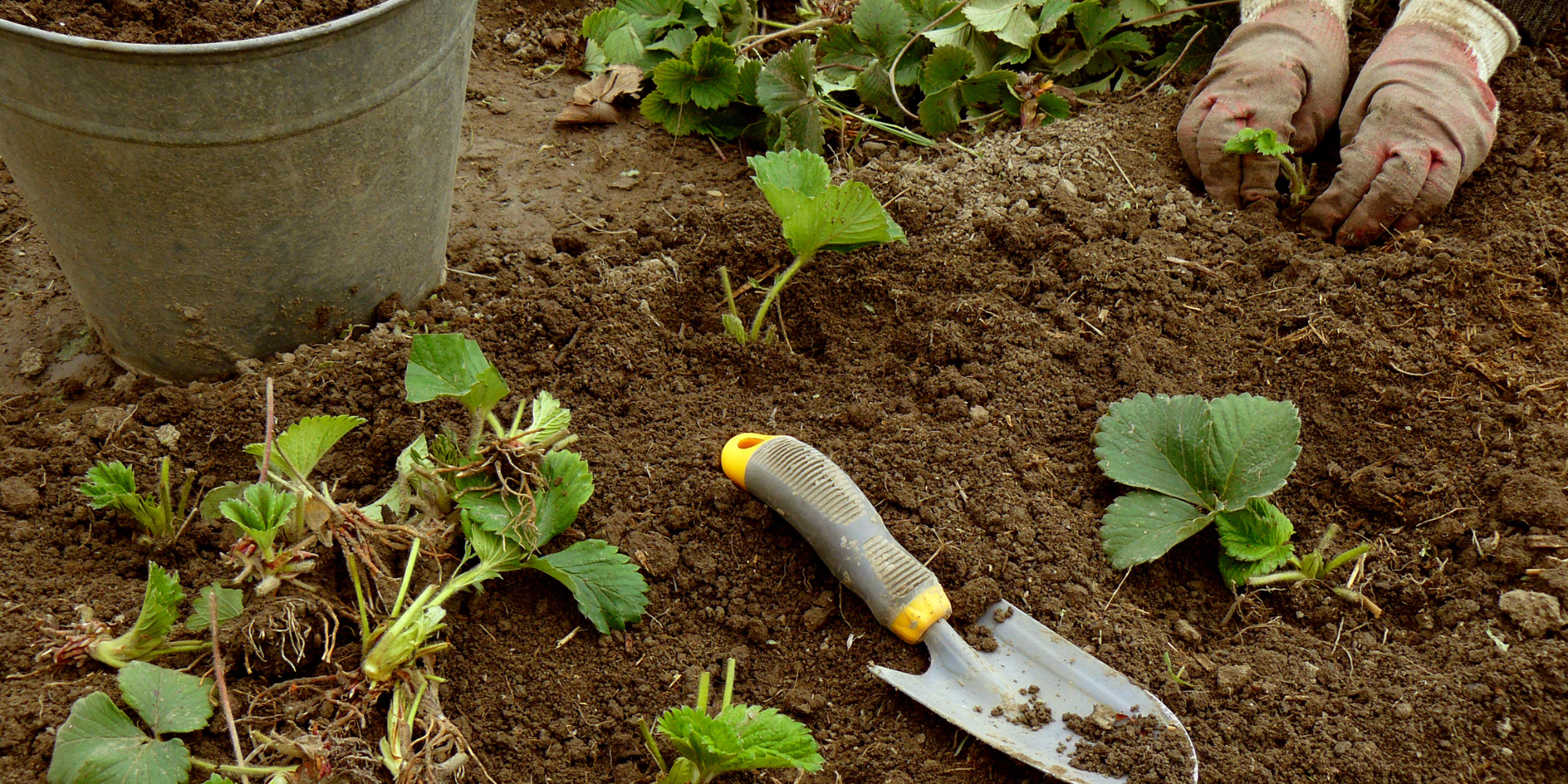Welcome to your Strawberry Bare-Root Care Guide! This section covers everything you need to know about planting, storing, and caring for your strawberry bare-root plants. When your bare-roots arrive, be sure to remove them from the package and tend to them immediately to ensure they stay healthy and hydrated. Whether you're planting them right away or need to store them temporarily, this guide will help you enjoy a healthy, abundant harvest.
Planting
In Beds or Containers
Soil Preparation: Strawberries prefer well-drained, sandy loam soil enriched with organic matter. Add compost to the soil for healthy growth.
Planting Depth: Plant the crowns so that the roots are fully covered, with the crown (where roots meet stem) at soil level to prevent rot.
Planting in Raised Beds: Space plants 12-18 inches apart, with 18-24 inches between rows. Dig a small hole for each plant, allowing the roots to spread out naturally. Place the crown at soil level, then fill in soil around the roots. Water thoroughly to help the soil settle around the roots.
Planting in Containers: Use a container at least 8-10 inches deep per plant, with drainage holes. Fill the container with high-quality potting mix, leaving space for the crown. Position the crown at soil level, then fill in soil around the roots. Water until excess drains from the container base.
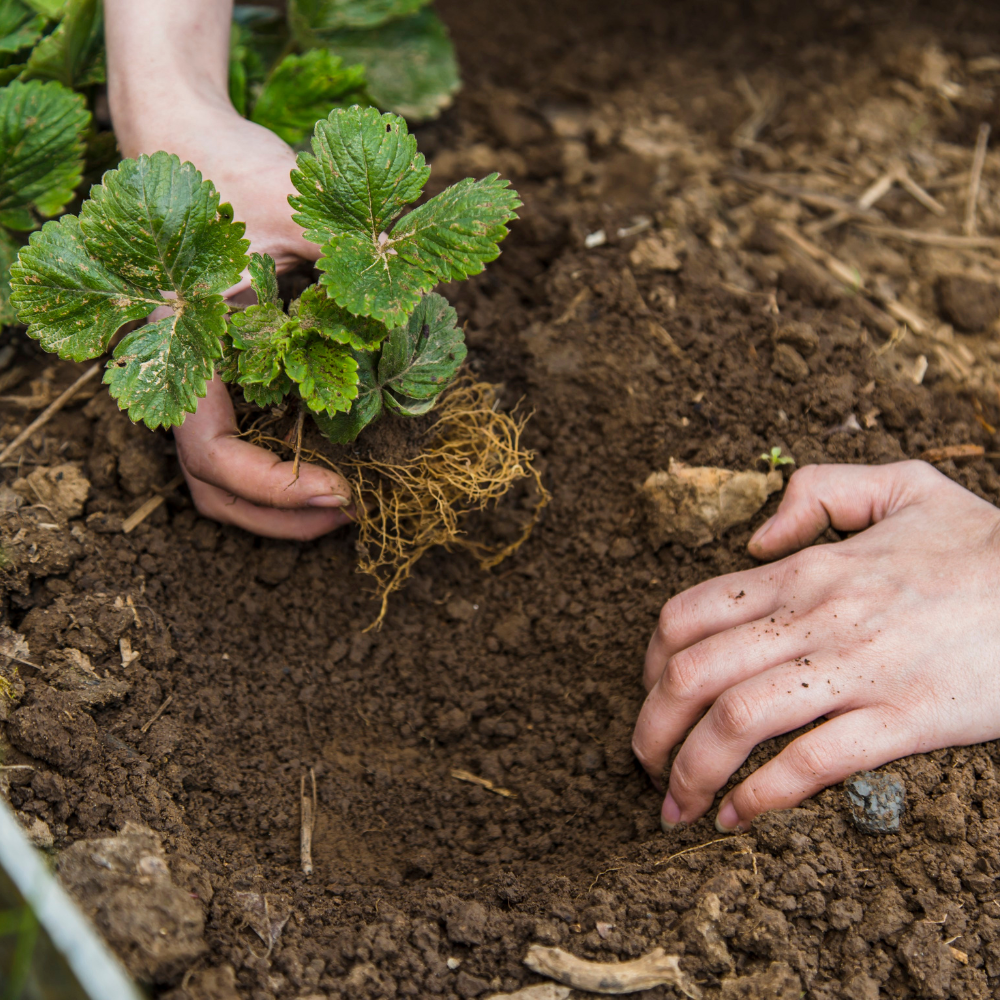
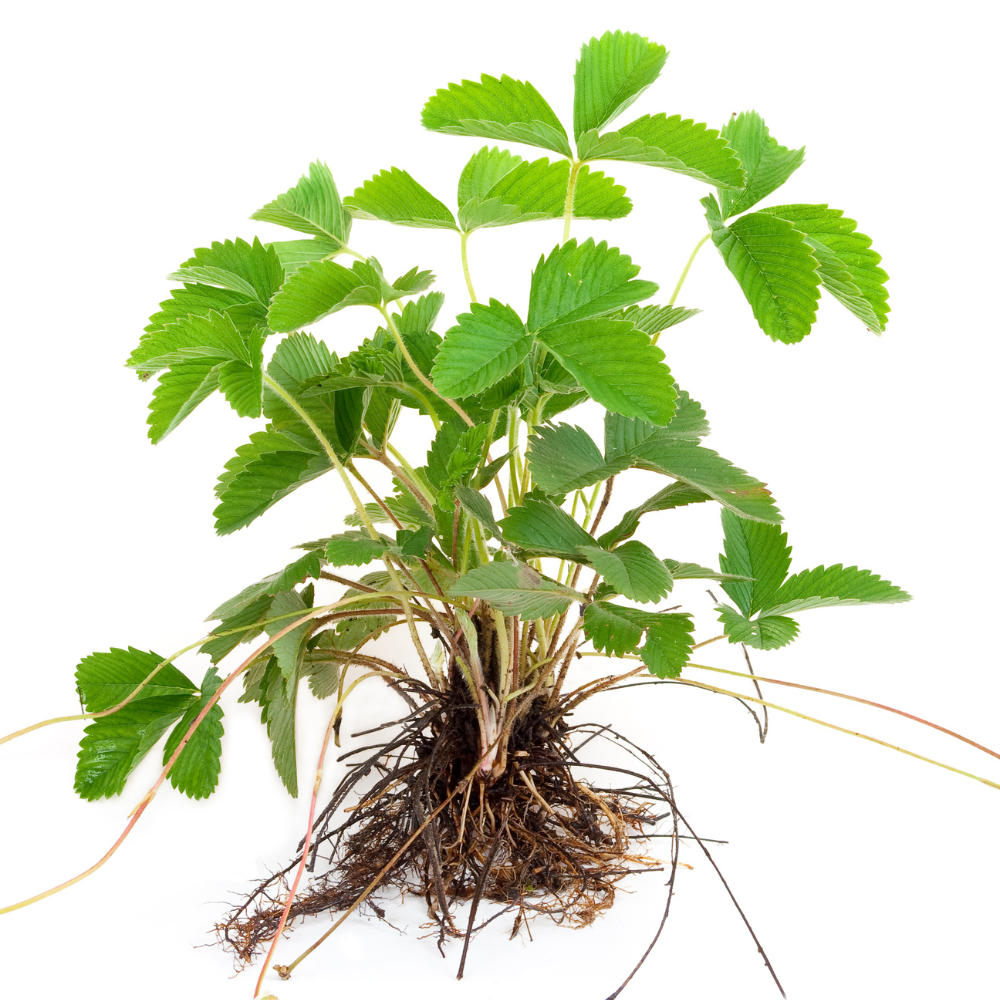
Temporary Storage Tips
Cool Storage: Store bare-root plants in a cool, dark place like a basement or garage.
Moisture Maintenance: Wrap roots in slightly damp paper towels or sphagnum moss, then place in a plastic bag with ventilation holes. Check roots every few days to keep them slightly damp.
For Extended Delays: If delayed over a week, consider “heeling in” the plants temporarily in a container filled with potting soil until conditions improve
Basic Care & harvesting
- Sunlight: Provide at least 6 hours of full sun daily for best fruit production.
- Watering: Keep soil consistently moist but avoid waterlogging. Water at the plant base to reduce moisture on leaves and fruit.
- Fertilizing: Apply a balanced fertilizer at planting and after the first harvest to encourage steady growth.
- Mulching: Place mulch around each plant to conserve moisture, suppress weeds, and keep fruit off the soil.
Harvesting Tips
- Timing: Strawberries are usually ready to pick 4-6 weeks after flowering. Harvest when berries are fully red for peak flavor.
- How to Harvest: Twist the berry gently at the stem to avoid plant damage. Regular harvesting encourages new growth and fruiting.




